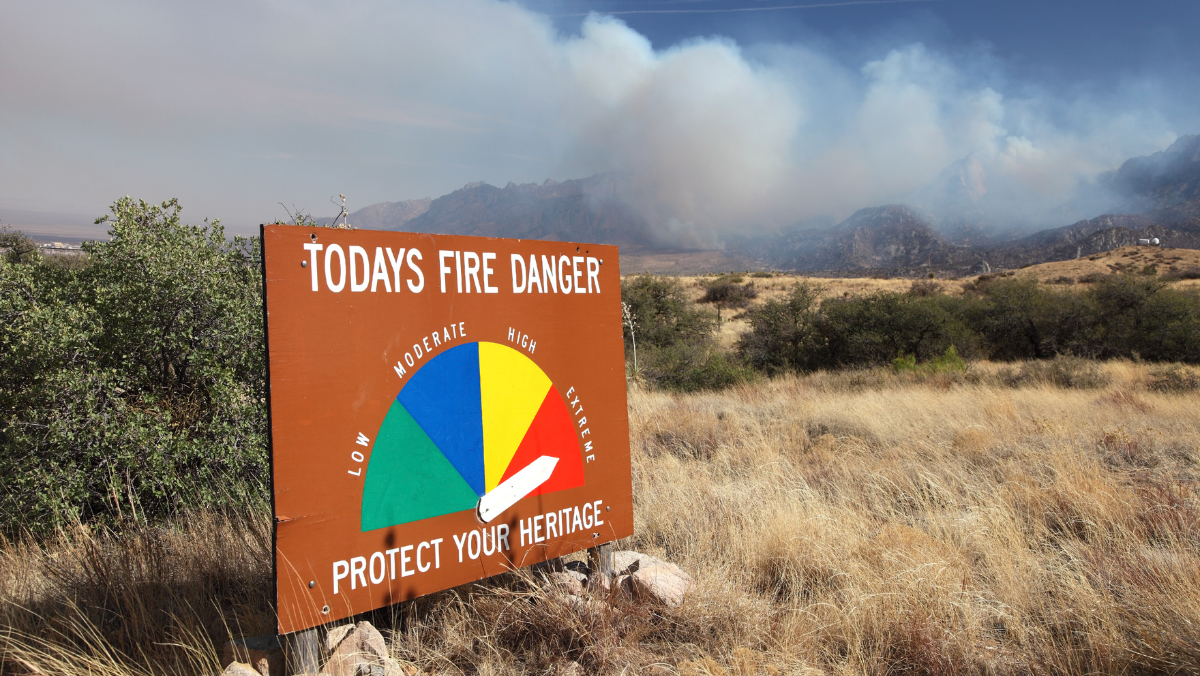How to Protect Your Family & Home From Wildfires
Fire risk is a huge concern August - October! 🔥 These months can be hot, dry and windy in Sonoma County. Now is a GREAT time to put together an emergency kit (see image below for ideas) and to come up with an evacuation plan for your family and pets. We also recommend implementing informed landscape practices, and creating zones of defensible space. This will help ensure your property is more fire resilient, beautiful and a safer habitat for wildlife. Most house fires are caused by flying embers, not oncoming walls of flames. Embers that land on or near your house can easily ignite plants, mulch, dry leaves or stored items. The first step is to harden your home. This means giving careful consideration to the roof, vents, decks, windows and eaves. For specific actions you can take, check out the University of California Agriculture and natural Resources’ “Preparing Your Home” guide: bit.ly/3Brg4nM. Next, create defensible spaces around your home. This doesn’t mean taking out all trees and plants and replacing them with rocks, leaving you with a moonscape. It means making thoughtful choices about what to keep next to your home and how to maintain your property. Defensible space guidelines define three ignition zones within 100 feet of your home: Zone 0: 5 feet around your home, decks and outbuildings, often called “the ember defense zone” Zone 1: 5 - 30 feet around your home, or to the property line Zone 2: 30 - 100 feet around your home, or to the property line In Zone 0, the ember defense zone, here are some actions you can take to create defensible space: Minimize and remove plants, especially under vents and eaves, and in front of windows and sliding doors. If you live in a highly fire-prone area with greater risk, adjacent to a wildland-urban interface or on a slope, remove all organic materials from this zone. Keep the roof and rain gutters of your home or any outbuildings free of debris, such as leaves or needles. Remove combustible materials like mulches, and replace them with inorganic materials, like gravel or stepping stones. In Zone 1: Create “islands” of plants with organic mulch that are separated by nonflammable materials, such as gravel, pavers or flagstone. Optimally, plant materials in this zone are 3 feet tall or less and primarily perennial, not woody. Using specimen (or individual) shrubs or trees is recommended. Prune all trees and shrubs to reduce combustible material and control their size...
Sonoma County Animal Shelter and Rescue Resources
Does your family’s emergency plan include your animals? Catastrophic weather-related events—floods, wildfires, hurricanes, and storms—can have a devastating effect on our pets and livestock, as well as humans. Now that we're officially into California's fire season, it's important to know how to prepare and where you can shelter or locate both large and small animals in an emergency. Here's some Sonoma County resources, we hope will help. Please let us know if you have any others to share, we would love to add to our list. Important Links: County of Sonoma Animal Services Humane Society of Sonoma County Sonoma Cart CDC Pet Safety Tips Sonoma Action for Equine Rescue Lost Hearts and Souls Horse Rescue Sonoma County Horse Council Shelter Resources: 24/7 ASSISTANCE: Sonoma CART hotline (707) 861-0699 Sonoma Sheriff (707) 565-2511 Napa CART (707)-732-1555 info@napacart.org / www.napacart.org Sonoma Community Animal Response Team 1415 Fulton Rd, Ste 205-415, Santa Rosa, CA www.sonomacart.org | www.facebook.com/sonomacart Hotline: (707) 861-0699 Sonoma County Animal Services Dog / Cat / Companion Animals / www.sonomacounty.ca.gov 1247 Century Ct, Santa Rosa, CA 95403 | (707) 565-7103 (open 8am-5:30pm) North Bay Animal Services Dog / Cat / Companion Animals / www.northbayanimalservices.org 840 Hopper St, Petaluma, CA 94952 | (707) 762-6227 (open 9am-6pm) Sonoma County Horse Park All Horses / Donkeys / Mules / Ponies (equids) / www.sonomahorsepark.com 7600 Lakeville Hwy, Petaluma, CA 94954. Enter long driveway, turn right at Giant Steps, Left at KMC barn. Look for signs for Large Animal Evac / CART Intake. Main contact to text/call when enroute (707) 861-0699 Petaluma Fairgrounds Livestock / Goats / Sheep / Camelids 100 Fairgrounds Drive, Petaluma, CA . Enter on Payan St. Finley Center Human Shelters Allowing Dog / Cat / Companion Animals 2060 W College Ave, Santa Rosa, CA 95401 Sonoma State University Human Shelters allowing Dog / Cat / Companion Animals 1801 E Cotati Ave, Rohnert Park, CA 94928 Sonoma County Fairgrounds 1350 Bennett Valley Road, Santa Rosa, CA | (707) 545-4200 Contact information: Cliff Sanders | (707) 529-8464 How to Prepare for an Emergency: Microchip your pets whenever possible Talk to your local veterinarian about disaster planning Identify best travel routes for any scenario and always have an alternate route as a backup. Prepare property access for first responders and animal response teams. Have a Disaster Plan binder ready, including: proof of ownership, multiple emergency contacts, vet records, medical directives, photos, brand registration, microchip info, insurance contacts and proof of insurance, out of area emergency contacts. Stay plugged into your local community! Often times, locals pitch in to help in the event of an evacuation. If you have horses or livestock, good barn and field maintenance can reduce danger. ...


